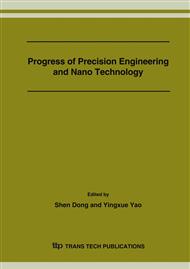p.257
p.263
p.269
p.276
p.281
p.286
p.291
p.297
p.302
High Speed Wire Electrical Discharge Machining (HS-WEDM) Phenomena of Insulating Si3N4 Ceramics with Assisting Electrode
Abstract:
Advanced engineering ceramics are more and more widely employed in modern industries because of their excellent mechanical properties such as high hardness, high compressive strength, high chemical and abrasive resistance. This paper investigates the high speed wire electrical discharge machining (HS-WEDM) of Si3N4-based ceramics by assisting electrode method. The theory of assisting electrode method is introduced. The machining phenomena under different electrical parameters were studied and the optimized machine pulse width was got. The material removal mechanisms change with the increase in the power of single pulse.
Info:
Periodical:
Pages:
281-285
Citation:
Online since:
May 2007
Authors:
Keywords:
Price:
Сopyright:
© 2007 Trans Tech Publications Ltd. All Rights Reserved
Share:
Citation:


